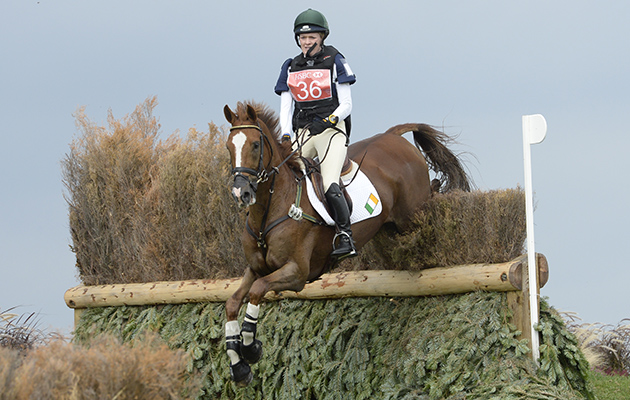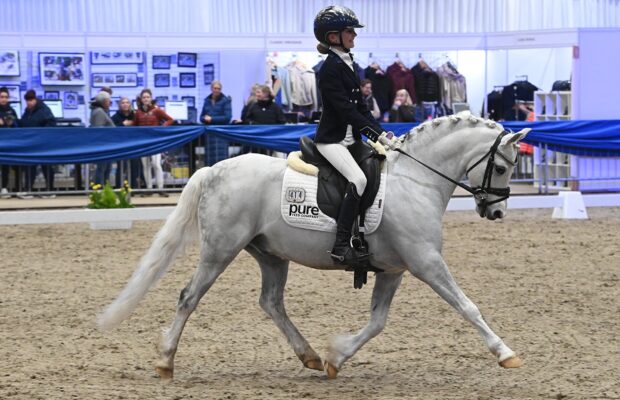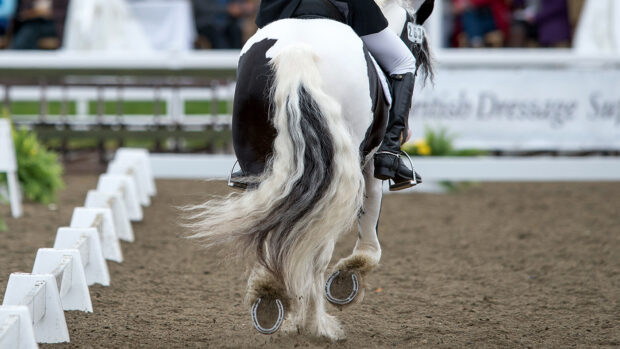The international dressage rider (pictured) gives her advice on promoting bend and flexion in a stiff horse
Maria was selected as travelling reserve for the 2008 Olympic Games and in the same year she became national champion. In 2009, she was selected for the silver medal-winning European team. In 2010, she added a team silver medal at the World Equestrian Games to her haul.
Training the stars
This is one of the most common things I work on with clients. Quite a few people are afraid to move their horse’s neck in case they lose the straightness of the body. Once these basics are in place, the neck needs to be mobilised so lateral work can have more control and quality.
Riding on different lines and using circles is beneficial during training for improving flexion. For a horse to bend, he needs to have length of neck so he can properly bend around the inside leg.
When asking for flexion, the inside rein needs to be shorter and the outside longer. The rider should hold their hands together.
Tackling the issue
1. While holding the outside rein in the outside hand as usual, take hold of the inside rein with your outside hand and slide your inside hand towards the bit an inch. Then release the inside rein from your outside hand and bring your hands back on either side of the horse’s neck. This ensures the inside rein is made shorter without losing the connection to the bit.
2. When flexing him to the inside, you ideally want to see the horse’s inside eye — if the horse is stiff this can be exaggerated to ensure he is more supple but it only needs to be held for short intervals. Inside neck flexion is required to establish better gymnasticity, balance and connection between the inside leg and outside rein.
3. A useful exercise is to leg yield away to the outside from the centre line to the outside far corner of the arena. Think of riding on to the diagonal with neck bend and then applying the inside leg to move the horse across to the outside.
Turn on to the centre line and ride to the outside far corner of the arena (see diagram), so you are moving the horse away to the outside using your inside leg.

The line is long and shallow, which should help with fluency and will enable you to repeat the exercise straight away again, helping with continuity and consistency.
4. Ask for an inside neck bend and make sure you can ride the whole of the arena on the track with the neck bend being independent of the body. If the horse wants to fall in, use your inside leg and open up your outside rein; a whip on the inside shoulder can be helpful to stop him falling to the inside.
Article continues below…
You might also be interested in:

Using cavaletti to improve the horse’s canter and balance

Subscribe to Horse & Hound magazine today – and enjoy unlimited website access all year round
Consider this…
- If the horse is stiff, the most common response to inside flexion is that he will fall in off the line. This is where the rider’s inside leg needs to support the horse into the outside rein.
- Make sure the horse is going freely forwards and straight, and has enough length of neck, before taking the neck flexion to the inside.
- Build up the demand gradually, for example the amount of flexion and the length of time that you hold it.
- Make sure you look in the direction you want to ride.
Would you like to read Horse & Hound’s independent journalism without any adverts? Join Horse & Hound Plus today and you can read all articles on HorseandHound.co.uk completely ad-free.




